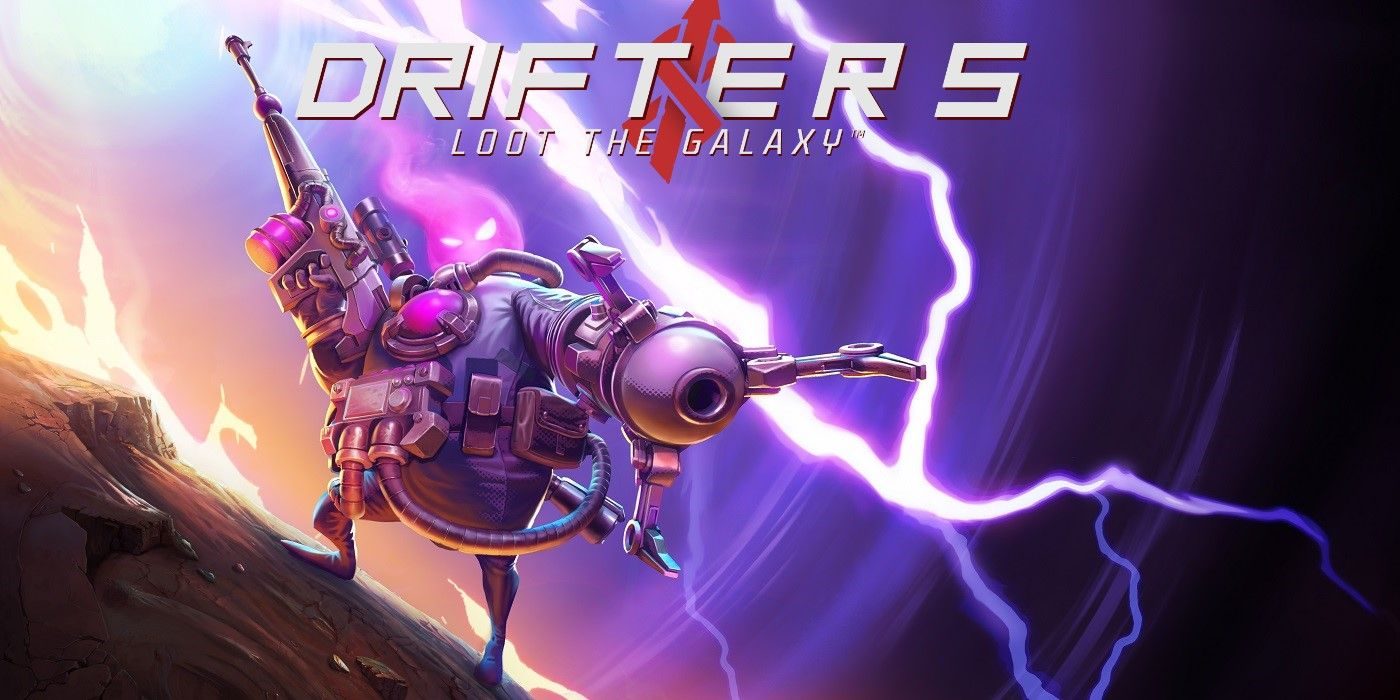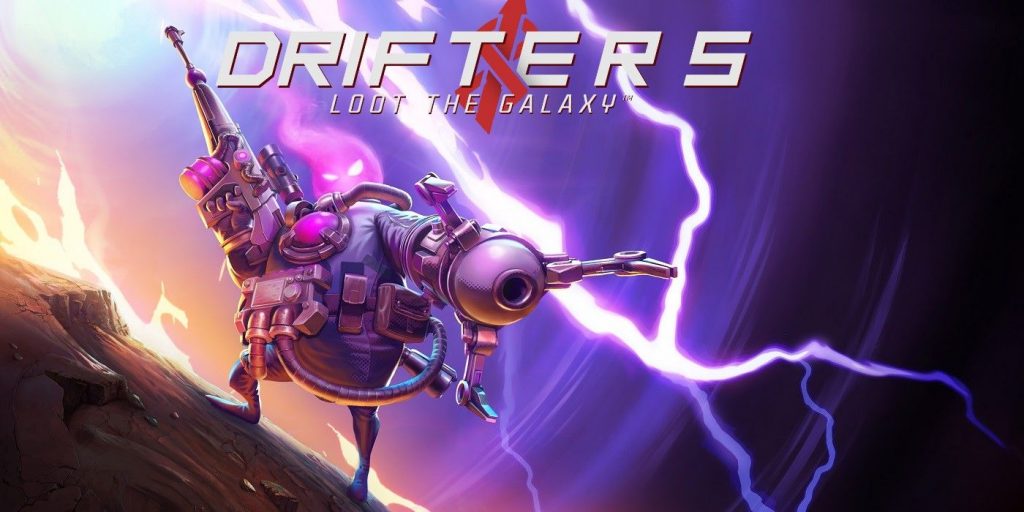
Ahead of the release of Drifters Loot the Galaxy‘s open beta, Game Rant got the chance to sit down with Haydn Dalton, the Creative Director for Blind Squirrel Games. Developers at the studio have been involved with beloved titles like Bioshock and Borderlands 2, among others, but Drifters Loot the Galaxy will be Blind Squirrel’s first original game. Our discussion ranged from the challenges of development to what makes a good shooter and beyond, but the key takeaways are the unique inspirations and mechanics in Drifters.
Drifters Loot the Galaxy is primarily focused on traversal and frenetic, multi-directional movement. Each of the unique hero characters is equipped with both a jetpack and a grappling hook, used to drift around the map, launch into the air, and swing around corners at a moment’s notice. The visuals and action are cartoonish and charming, with the chaos of Smash Bros and the team-based hero combat of Overwatch mentioned as clear inspirations. The open beta is live on steam now, and well worth a good look.
RELATED: Drifters Loot the Galaxy Inspired by Spiderverse, Anime
Q: What is it like to work on the studio’s own original game for the first time?
A: It has been very challenging and immensely gratifying in equal measures. Blind Squirrel Games has been around for 10 years, so to be given a chance to help them create their first original IP has been an honor.
Q: What are the extra challenges associated with that? What are the benefits?
A: Being a self-funded developer and publisher has allowed us to make our own decisions about every facet of the game we create. This allows for a lot of freedom, but it also doubles the pressure to deliver on both sides.
Q: Are there any specific games you’ve worked on as a team that have helped inform how you designed this one? For example, did the team take anything away from working on Borderlands 2 or Sunset Overdrive that helped in making this?
A: I do think that having team members who have been exposed to big AAA games such as the ones you have mentioned has helped inspire the level quality we want to hit, but wouldn’t point to them as titles which guided us on what we were doing on Drifters. We have team members who have been part of some huge, original shooter franchises, so we leaned into their experiences and into our own expectations of what makes a fun shooter.
Q: There’s a lot of mention of Smash Bros and Overwatch as influences/inspirations. Are there any other game inspirations? What about inspirations outside of games- movies, books, etc.?
A: When developing an original IP, we knew that not only did we need to deliver on creating a unique experience, but we also needed to give it a visual identity that felt like its own. Art stylization was always the route we wanted to go, as it fits our universe best. Once we saw Into the Spiderverse and Blindspot (Love, Death and Robots), we believed that an illustrative styling would really bind it all together. There’s also a lot of love for anime on this team, which you’ll notice with the way we styled our vfx; we are really happy with how the visuals have turned out.
Q: In your opinion, what makes a good shooter?
A: This is such a huge subject, as there are so many elements that combine to make a good shooter. If I had to boil it down to a focus point, it would have to be the weapon handling and feedback mechanisms that support their use, as they’re the high-frequency actions players are most engaged with. The devil is in the details of how well the visual, audible, and tactical elements are tied together when players aim, shoot or are being shot at.
This is going to sound like a crazy analogy, but I equate nailing the core shooter experience to drinking in a dive bar with a good friend; if the moment-to-moment is strong and engaging, the surroundings are less important.
Q: It seems like mobility and movement were a big focus for this game- what was your guiding principle for designing traversal?
A: “Exhilarating Traversal” was one of our design pillars, so has been a continual focus for us. Within that statement, Momentum and Flow were things that we called out as being important to the end experience. Not only did we want players to have lots of options about how they moved, but we also wanted to make sure that they did so smoothly, easily, and quickly.
Q: Is there anything more you’d like to say about the gun play? How does it mesh with the unique movement?
A: To make the gun play work well with such a dynamic movement system, it was important for us to allow players to aim in all directions, no matter which direction their character is headed. This allows for engagements to happen without hindering the locomotion of the player, which in turn reduces the complexity of what they must worry about on a moment-to-moment basis.
Q: What is your favorite part of the game? What are you most proud of?
A: I’m most proud of how we’ve pulled off the Drifting traversal mechanic. It brings a whole new way to engage in team combat and opens up a 360-degree dog-fighting experience that you cannot get anywhere else. Whether you’re in a group pursuit of an enemy object or you’re escaping a scene, the way you can seamlessly shift between ground-and-air and effortlessly maneuver around complex structures feels great.
Q: What are you most excited for moving forward?
A: This is our first live service game, so I am excited to see how the public reacts to Drifters, how our community grows and how they help us shape where it can go. We’re a small enough developer to be agile to the needs of our players and once it’s released, we know it becomes just as much theirs as it is ours.
Drifters Loot the Galaxy is currently in open beta on PC.
